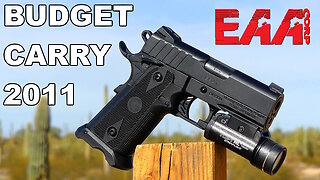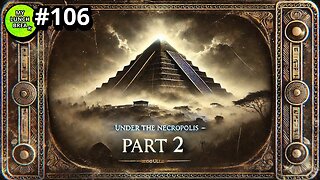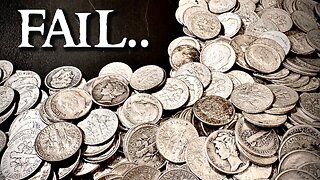Premium Only Content

Periodic Table
For Employees of hospitals, schools, universities and libraries: download up to 8 FREE medical animations from Nucleus by signing up for a free trial at: http://nmal.nucleusmedicalmedia.com/biology_youtube
#PeriodicTable #Elements #AtomicNumber
SCIENCE ANIMATION TRANSCRIPT: In this video, we'll discuss the periodic table of elements. A chart called the periodic table of the elements organizes all of the known elements. Rows in the periodic table are called periods, and columns are called groups or families. A section from each of the two bottom periods has been pulled out and placed below the table to avoid making the table too wide. The elements are organized left to right and top to bottom by their atomic number, meaning the number of protons in one atom of the element. Each box shows an element represented by its unique symbol. The smaller number next to each element's symbol represents the atomic number. The atomic number increases by one as you go from left to right across each period. The larger number represents the atomic mass. Notice that the atomic mass of many elements is a decimal number rather than a whole number. This is because the atomic mass is a weighted average of the mass numbers for the isotopes of an element. A weighted average takes into account how common each isotope of an element is in nature. The most common isotope counts for much more in the average than less common isotopes, just like a final exam may count more than quizzes towards your grade in a class. Notice that the atomic mass isn't the same as mass number, which is simply the total number of protons and neutrons in the nucleus of a particular isotope. However, you can determine the mass number of an element's most common isotope by rounding its atomic mass up or down to the nearest whole number. You can do this because the most common isotope has the most influence on the atomic mass. Round up if an element's atomic mass ends in .5 or greater, round down if an element's atomic mass ends in less than .5. Let's look at some examples from the periodic table. Helium has an atomic mass of 4.003. We can easily round that down to get a mass number of 4. We can also see that helium's atomic number is 2, which means it has 2 protons. Now, we can subtract the atomic number from the mass number to see that the most common isotope of helium has 2 neutrons. In the case of oxygen, we can round its atomic mass up to get a mass number of 16. Since its atomic number is 8, we know oxygen has 8 protons. And by simple subtraction, we can determine oxygen also has 8 neutrons. How does this work in a less common isotope of an element, such as hydrogen-3? The most common hydrogen isotope is hydrogen-1, as you can see from rounding the atomic mass listed in the periodic table. Recall that isotopes are identified by their mass number. So, we know hydrogen-3's mass number is 3. So, we can subtract hydrogen's atomic number of 1 from its mass number and see that hydrogen-3 has 2 neutrons. In summary, the periodic table is an organization chart of all the known elements. Each element is represented by its symbol, atomic number, and atomic mass. Elements are arranged left to right and top to bottom by increasing atomic number. An element's atomic mass is a weighted average of its isotope's mass numbers. Round the element's atomic mass up or down to find the mass number of its most common isotope. [music]
NSV15014
-
 19:56
19:56
inspirePlay
1 day ago $0.34 earnedWalking with Lions & Facing Africa’s Wild Side | Safari Adventure with the Grid Championship Crew!
14.7K1 -
 10:50
10:50
RTT: Guns & Gear
1 day ago $1.05 earnedBudget Friendly Carry 2011: EAA Girsan Brat 2311
15.3K3 -
 3:49:06
3:49:06
Alex Zedra
17 hours agoLIVE! New Game | Nuclear Nightmare
109K14 -
 25:08
25:08
MYLUNCHBREAK CHANNEL PAGE
1 day agoUnder The Necropolis - Pt 2
288K80 -
 1:45:59
1:45:59
Spittin' Chiclets
1 day agoCanadian Chokejob - Game Notes Live From Chicago - 12.28.2024
265K32 -
 9:18
9:18
Space Ice
1 day agoThe Guyver - Alien Bug Suits, Exploding Dragons, & Mark Hamill - Weirdest Movie Ever
169K27 -
 9:31
9:31
Silver Dragons
1 day agoSilver Has Failed - Can it Set the Record Next Year? THIS BANK SAYS YES!
6.3K2 -
 7:08
7:08
GBGunsRumble
20 hours agoGBGuns Range Report 28DEC24
3.63K1 -
 1:19
1:19
LimitlessAmbition
7 hours ago $0.13 earnedHow the Discipline of Self-Respect Will Change Your Life Forever
2.69K -
 12:46
12:46
RealReaper
2 days ago $9.44 earnedMufasa is a Soulless Cash Grab
97.3K13